He is one of the guardians of the Great Indian Bustards in their last stronghold in the Thar Desert landscape in Rajasthan’s Jaisalmer District. His heart beats for the wildlife of Thar, which is also why he transitioned from a promising career in dentistry to a profession that was a complete stranger to him. Dr. Neelkanth Bora, the Program Officer of the GIB and Lesser Florican Program of the Bombay Natural History Society (BNHS), is now busy beating all the odds to conserve the threatened wildlife of the Thar and its fast-vanishing Great Indian Bustards (GIBs). This article tells the story of Neelkanth, an inspiration for all who are ready to chart unknown territories to turn their dreams into realities.
Conservationist In The Making
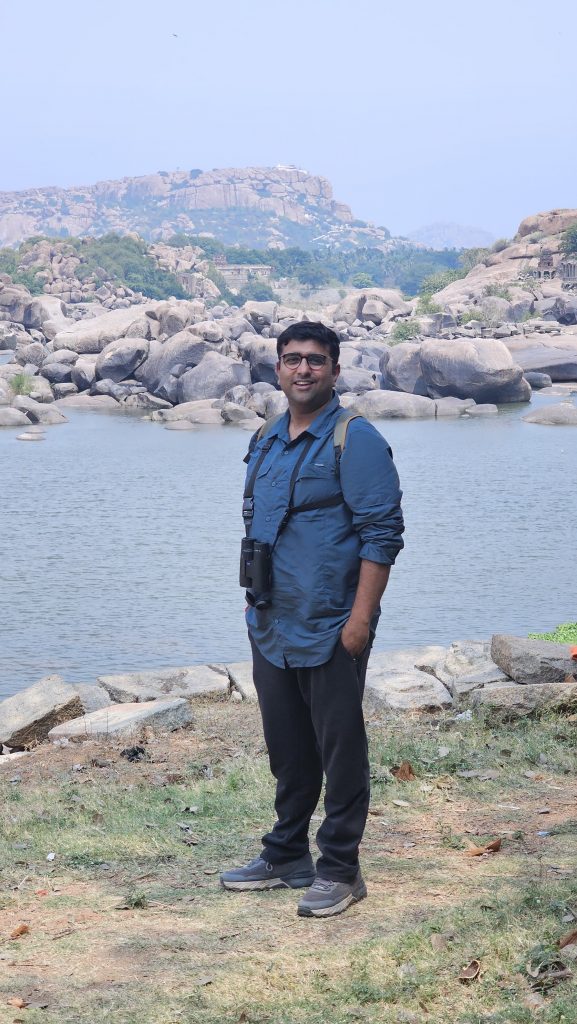
Neelkanth first came to observe wildlife at close quarters when his father, a doctor with a government job, was transferred from Jodhpur to work in a hospital in the Pali District in Rajasthan, which bordered the Aravalli Range. While Neelkanth grew up in Jodhpur and studied there, he would visit his father with his mother and sister during summer vacations.
“The sight of the Aravalli mountains and the dense jungles covering it would mesmerise me. Sloth bears were known to roam free near where we lived, so we were not allowed to play outside after sunset,” said Neelkanth.
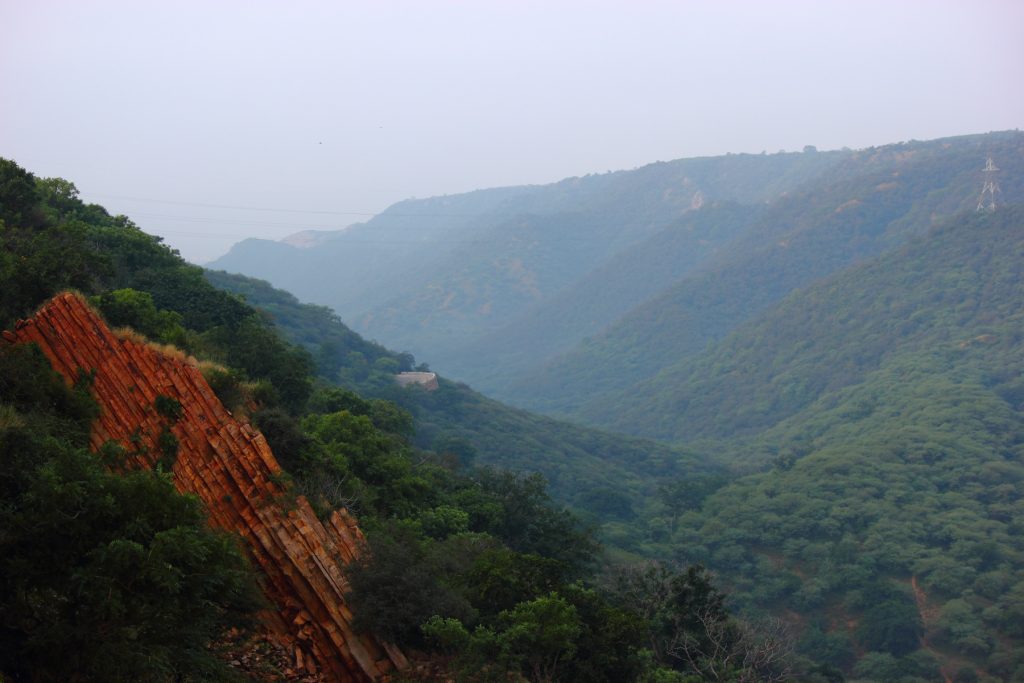
His fascination with the world of wilderness continued to grow, and he started going on birdwatching tours in Jodhpur with local organisations while in school. However, with no one to really guide him about a career in conservation, he went the conventional path of completing his schooling and then getting through the entrance examinations to achieve a BDS degree in dental sciences.
“While pursuing my education, my thoughts kept evolving as I started to understand more about conservation. I knew I wanted to work to save wildlife, but I was unsure how to do so. I was trying hard to concentrate on my dental career but was finding it increasingly difficult. There was always an ongoing conflict within myself,” said Neelkanth.
While he was doing his internship in dentistry, Neelkanth came to learn about the “Leadership Course in Biodiversity Conservation” offered by the BNHS. He enrolled for the same, leading to a turning moment in his life.

“Visiting the headquarters of BNHS at Hornbill House in Mumbai for the course orientation, where conservation legends like Salim Ali had worked for decades, was a dream come true for me,” said Neelkanth.
For the next year, Neelkanth had the opportunity to attend outdoor camps organised for the course participants and even went to the Agumbe rainforest in Karnataka for herping.
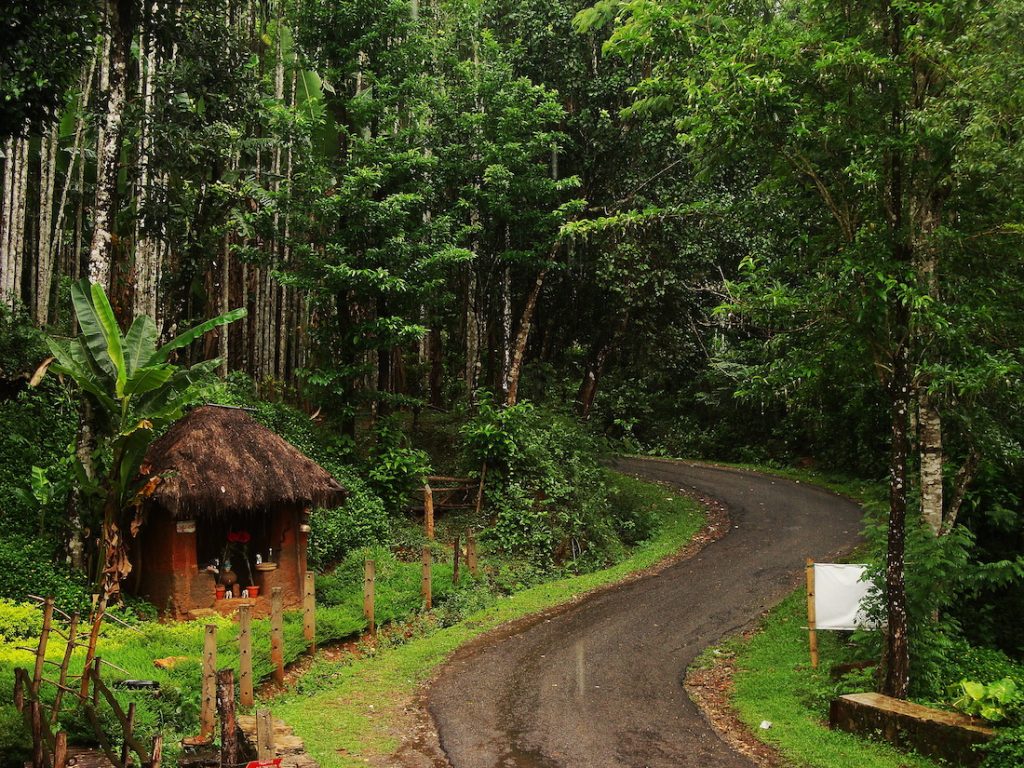
Coming from an arid region, Agumbe was a total shock—albeit a happy one. He carried just a single pair of rainwear with him but wished he had more. The rain was incessant for the three days he stayed there with fellow campers, with the rain taking a break for only three and a half hours during that period. All that, and the rainforest teeming with life, was new and exciting for him. He even had the good fortune of seeing a king cobra nest – a rare sight indeed! He also came in contact with many BNHS personnel during that trip.
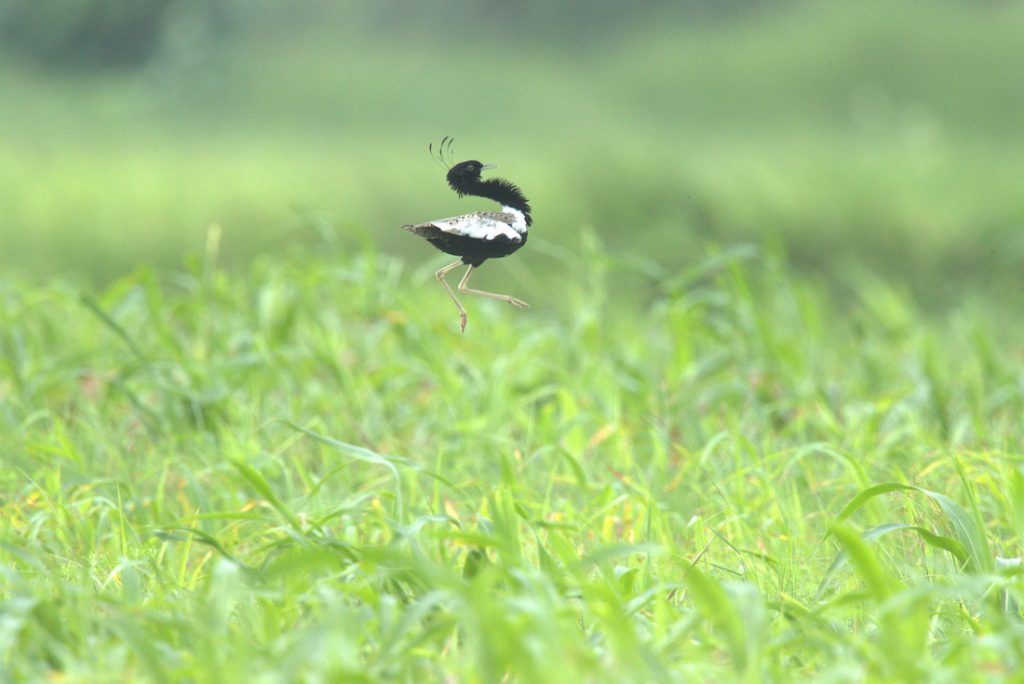
Back in Jodhpur, Neelkanth soon got a call from the BNHS headquarters in Mumbai, where he was offered a chance to participate in a nationwide survey for lesser floricans. By then, he had completed his internship in dentistry and was wondering about the next step in his career.
“I informed my parents that I would be gone for 15 to 20 days for the Survey and then be back. However, I actually never returned in the sense that I left my previous career, and I now started working where I truly belonged,” said Neelkanth.
Finding Life’s Purpose

During the lesser florican survey conducted by BNHS and other organisations in Maharashtra, Neelkanth came in contact with Dr. Sujit Narwade, his present senior in the field. Sujit, who was working at that time with the Wildlife Institute of India, invited Neelkanth to take part in the lesser florican survey in Rajasthan and he gladly accepted the offer.
“Although the field situations I faced during those nearly 30 days of outdoor surveys were quite challenging, I never really felt tired. I was completely blissful while working in the grasslands, looking out for the graceful lesser floricans making their breathtaking courtship displays above the grass blades,” said Neelkanth.
In December 2018, when Dr. Sujit was working for BNHS, he invited Neelkanth once more to volunteer for lesser florican surveys in the Shokaliya grasslands of the Ajmer district of Rajasthan. By 2019, after volunteering for around 10 months, Neelkanth was offered a permanent post as the Program Officer of the BNHS GIB and Lesser Florican Program, which Sujit headed.
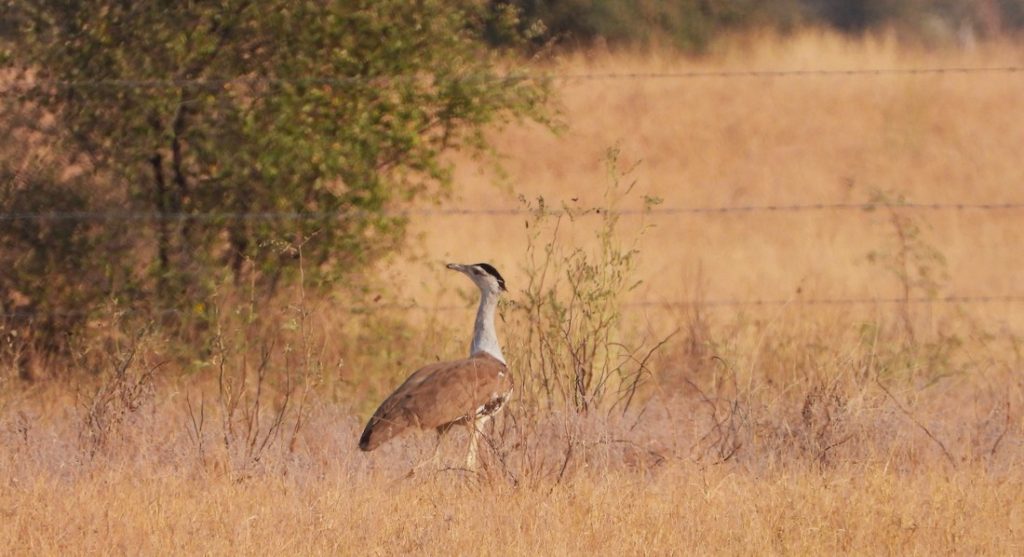
“By now, I had learned enough about the sad plight of the GIBs. I also knew that the Thar landscape was the last hope for this species. As a local, I felt it was my responsibility to ensure a secure future for the bird,” said Neelkanth.
With this thought in mind, he set out to work hard under Sujit’s able leadership to lay the foundation of GIB conservation in Thar’s unprotected landscape around the Pokharan Field Firing Range (PFFR), one of the last places where GIBs are still found.
Laying The Foundation
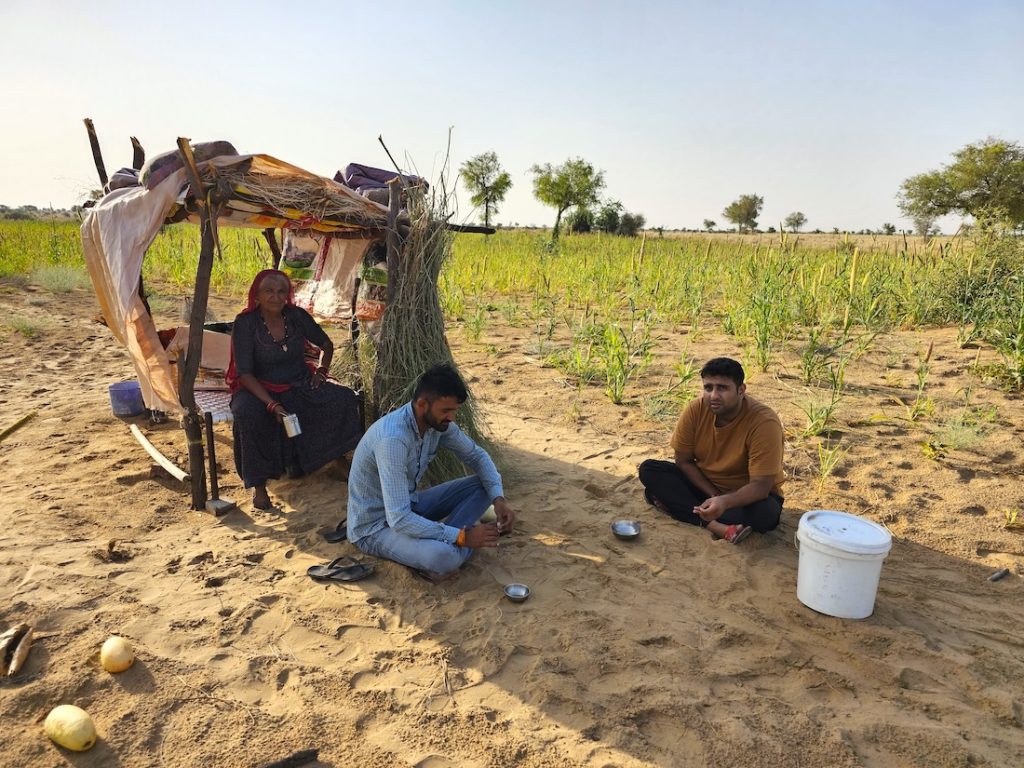
The team’s first major activity included working with the local community, involving them in conservation activities, and garnering their support for the same. In unprotected wildlife habitats across India, achieving conservation goals is almost impossible when the local communities do not cooperate.
Initially, the plan was to understand the landscape, its wildlife, and local people. To do this, the BNHS team conducted landscape-level surveys for the GIB across their work area, met with the locals, and held education and awareness programs for villagers in the landscape.
“During these activities, I understood that theoretical knowledge and higher degrees are not everything in conservation. Field experience counts the most. I met Kamlesh Bishnoi ji during this time. He is a forest guard working for the local forest department and has in-depth knowledge about the local wildlife. I learned a lot from him,” said Neelkanth.
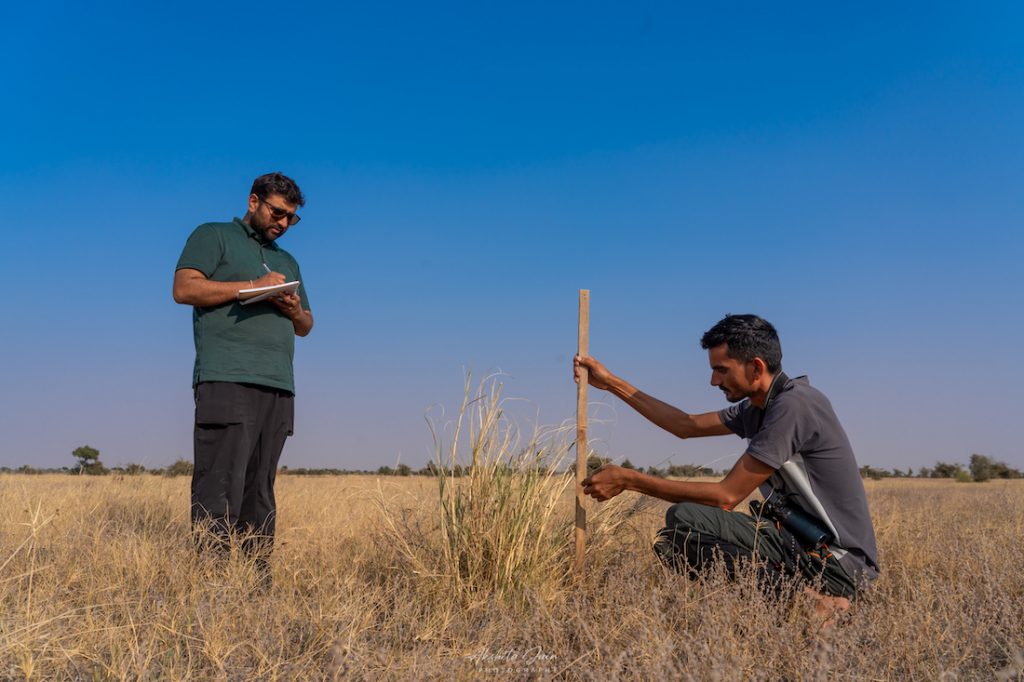
Fortunately for Sujit and Neelkanth, the locals in their work area were mostly from the Bishnoi community. Bishnois are known for their immense dedication to wildlife conservation, which is inherent in their cultural practices and beliefs, as taught by their Guru Jambeshwar more than five centuries ago. Two young Bishnoi men—Pankaj Bishnoi and Sachin Bishnoi — even started working in the BNHS team as community engagement officers. Both of them belonged to the Khetolai village in the area. Sujit and Neelkanth then began training the new members in scientific documentation using binoculars, cameras, range finders, etc.
With a bigger and stronger team, Sujit and Neelkanth wanted to take a concrete step in GIB conservation in the PFFR area and its surroundings. They knew that habitat loss and degradation were the most significant challenges to protecting the GIBs in the Thar.
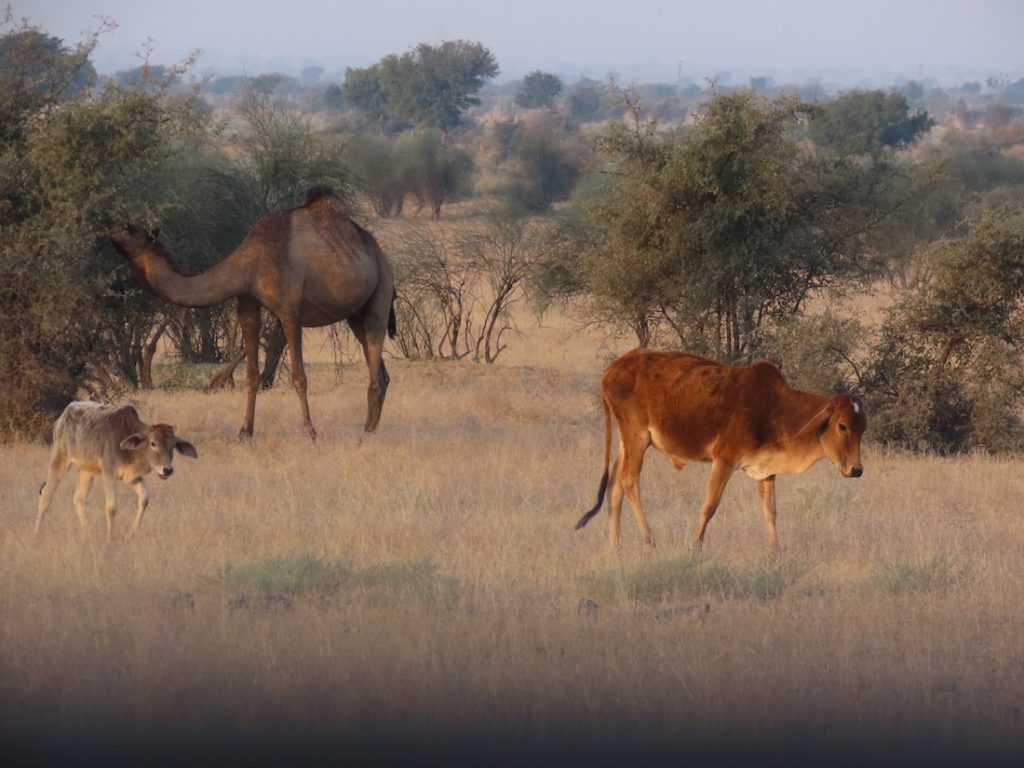
“There was immense grazing pressure by livestock on the grasslands in the area. Renewable energy infrastructure like solar panels and wind turbines spread across the landscape, fragmenting wildlife habitats. High-tension power lines emerging from this infrastructure posed a threat to GIBs and other birds, who would often die due to collisions or electrocution. Feral dog predation of GIB was another major issue. Spread of agriculture also posed a threat,” Neelkanth explained the threats to the bird.
The BNHS team knew they needed to consolidate a safe habitat for the GIBs to breed and raise their chicks. GIBs lack a hind toe and are hence unable to perch on trees. Thus, they spend most of their time on the ground in the grasslands, foraging for food or roosting. They also have their nests on the ground, making them highly vulnerable to damage and predation.
“We were already working with the local government in the area to restore the degraded sewan grasslands by removing the invasive species Prosopis juliflora from the landscape as part of a fodder program for cattle. While working on this project, we understood the process of grassland restoration. Now, we wanted to secure a grassland reserve for the local wildlife, but where do we get land for the same?” mentioned Neelkanth.
Time For Hard Work
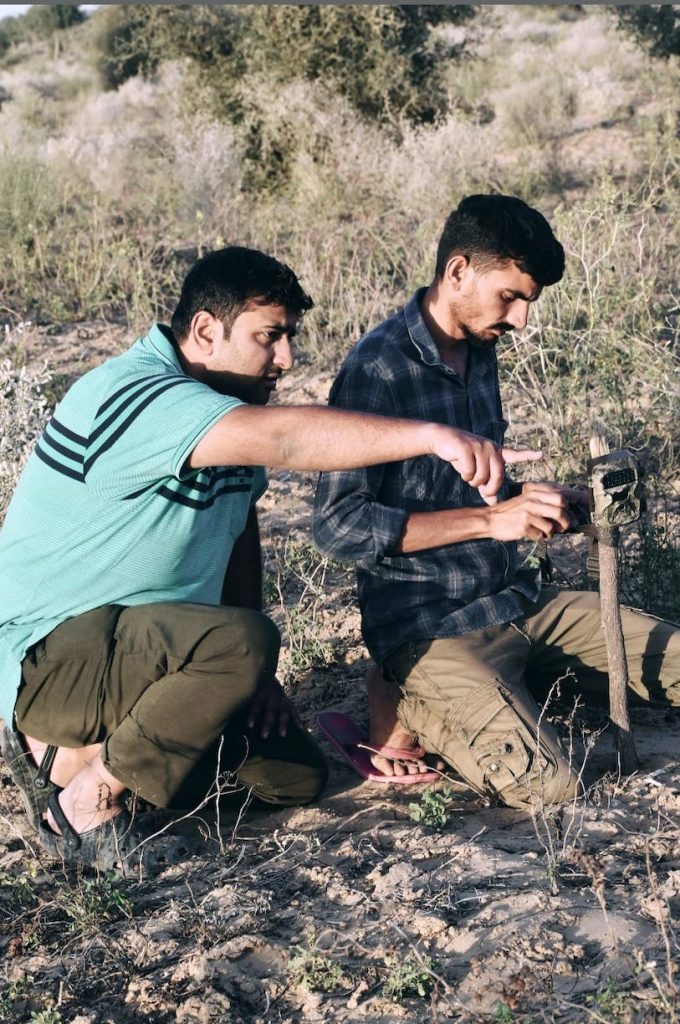
The BNHS team started engaging in further discussions with the local community, and soon, a section of villagers from the Bishnoi community from Khetolai village near the PFFR was ready to hand over parts of their land to BNHS for the creation of a secure home for the local wildlife.
“Once we got permission from the villagers and all the legal formalities were completed, we set up our base camp on the land where we were to build the reserve. Now, it was time for a lot of hard work,” said Neelkanth.

The BNHS team then worked relentlessly for months to create the reserve. They fenced the land, keeping only a single entrance to prevent livestock, feral dogs, and wild boars from entering the area. They also removed invasive plants and planted native grasses. No livestock grazing was allowed in the area for two years. Strict monitoring of threats and continuous surveys were conducted in the reserve to ensure things were working as planned.
Dreams Coming Alive
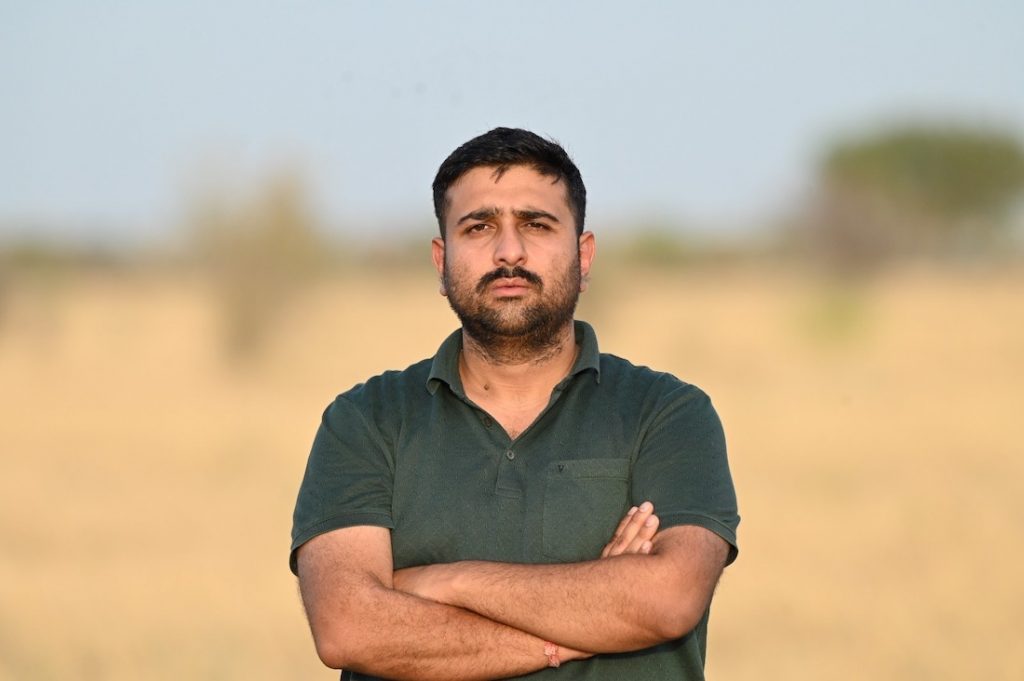
Zoom in to 2025, and the Model Grassland Reserve of BNHS is now a thriving native Thar grassland teeming with native flora and fauna. Chinkaras gallop across the grasses, while several species of vultures can often be spotted gathering by the waterholes created for the reserve’s wildlife. A saw-scaled viper has been spotted well-camouflaged in the grass cover while desert cats are sometimes seen chasing an Indian desert gird for a meal. Of course, the star of the desert, the critically endangered GIBs have also been recorded on several occasions in the reserve, especially during winters when the PFFR booms with sounds of military testing and the birds seek refuge outside the PFFR area.
“It is good to see that our efforts are paying off. We must really thank the Bishnoi community for allowing us to set up a grassland reserve on their land. They have set forth an exemplary example of dedication to the cause of conservation,” mentioned Neelkanth.
Neelkanth’s work often requires him to stay away from his family for days on end. He also works in extreme environments in the unforgiving Thar desert, where summers are scorching, often accompanied by violent sandstorms, and winters are freezing cold. The base camp where Neelkanth stays with his colleagues is remotely located away from all modern facilities and amenities. However, according to Neelkanth, the support from his family keeps him going.
“I thank my mother, wife, and sister for caring for the family and always supporting my work. My father, who is now no more, also never complained about me transitioning from the medical profession to full-time conservation. In fact, he would always ask Sujit Sir if I was doing my work well in the field,” Neelkanth recounted some fond memories.
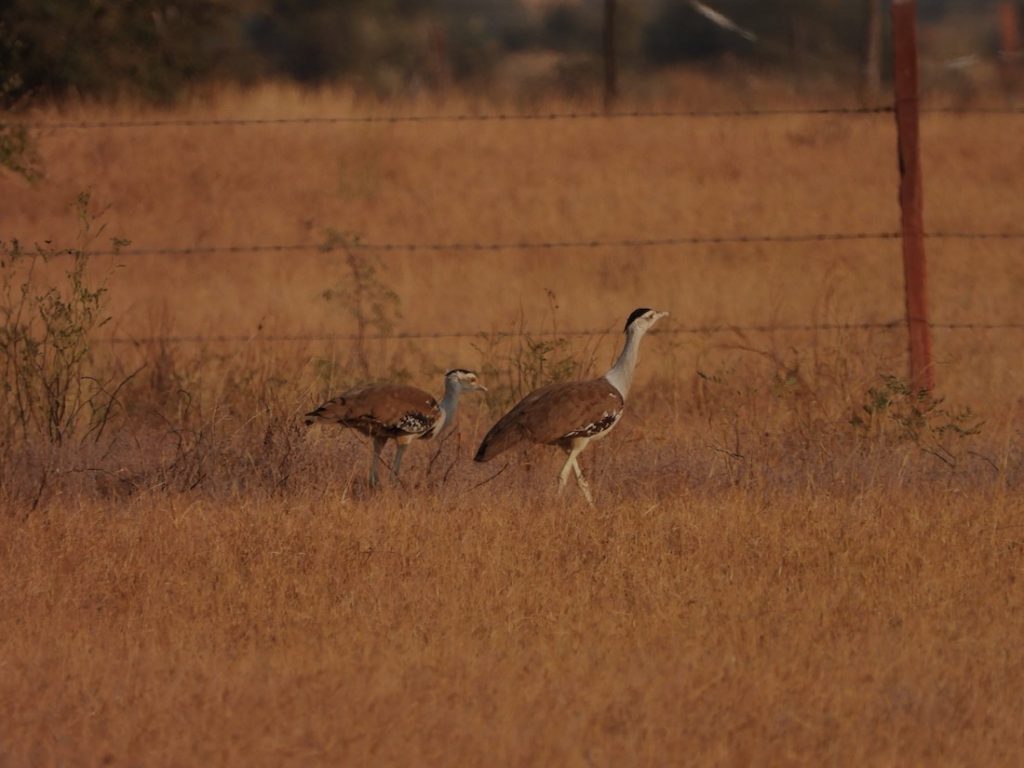
Neelkanth now wishes to expand his efforts across larger landscapes in the Thar to bring more land under some form of protection, ensuring that the remaining GIBs have a safe space to complete their life cycle. He walks across the Thar grasslands, promising to give his best to the plants and animals calling the place their home. Neelkanth inspires those who dare to think differently and tread an unknown path to find a purpose in life that is also beneficial to many others.
Feature image by: Akshita Jain

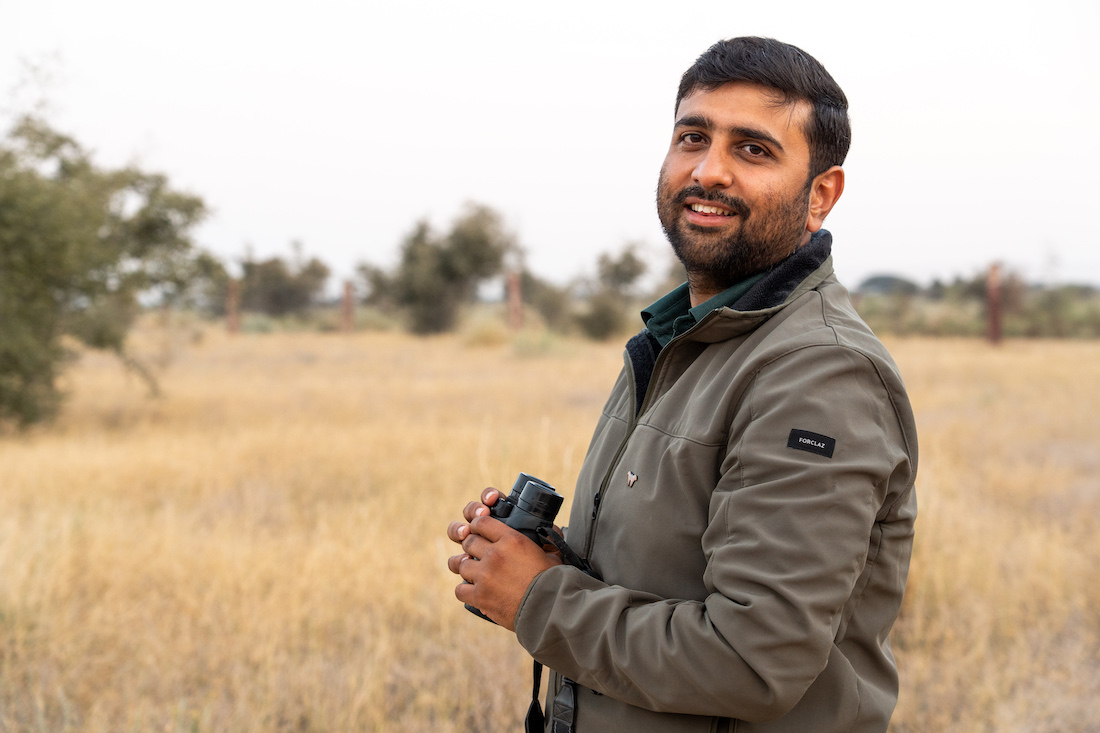
Great efforts by Team BNHS
Amazing grit Nd perseverance by nature lover and conservation team local and facilitators.hope chirping makes life beautiful rather than shelling all around.
Gratitude for the Dr Neelkanth and his team .
Amazing achievement after tremendous hard work and more milestones to achieve
Dr.Neelkant is one of the few who sincerely persuaded his dreams of nature conservation by choosing the path less travelled by others.
Kudos to all BNHS team for their efforts 👌 & dedication in conserving mother nature.
Chasing dreams while facing challenges is difficult. Good to read this amazing story and also highlight that there is work in other areas as well. Wishing you all the success in life and work.
अप्रतिम,अलौकिक कार्य।
श्रेष्ठतम कर्म,धर्म,श्रम की मङ्गलमय शुभकामना।
Following your passion….leaving behind your comfort zone is a big thing…living in harsh extreme weather conditions can make anybody fugitive but you remain determined well 👍 done
“You have achieved this position through your hard work, courage and efforts. We are very happy to see your success. May you continue to work hard like this and fulfill your dreams.” Jai Shankar
It’s a tribute to passion, purpose, and the extraordinary lengths one individual can go to protect our natural heritage.
Dr. Bora’s work for the Great Indian Bustard (GIB), a critically endangered bird native to the grasslands of Rajasthan, is not only courageous but also deeply moving. His shift from treating human teeth to preserving a vanishing species reflects a rare kind of dedication and environmental consciousness that our times desperately need.
This captures his grassroots efforts—rescuing birds, engaging local communities, and challenging apathy with action. What stands out most is how Dr. Bora bridges science, compassion, and local wisdom to become a true guardian of biodiversity.
This story is a great reminder that conservation is not just the job of wildlife officials or scientists; it’s something anyone can contribute to. Dr. Bora’s life shows us that protecting the environment starts with care—and is driven by relentless effort.